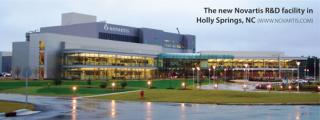New Plant Expression Systems Drive Vaccine Innovation and Opportunity
April 1, 2011
Plant expression systems are emerging as fast and inexpensive methods for producing vaccines. Someday, plants may surpass mammalian and even many microbial systems in efficiency and cost-benefits for the manufacture recombinant proteins. This is particularly so for the rapid manufacture of truly large-scale (million- or even billion-dose) vaccine antigens. Whether grown as single cells or tissues in photosynthesis reactors, as whole plants in controlled laboratory situations, or cultivated in fields of transformed food-commodity plants (e.g., rice, potatoes, or tobacco), plants being adapted for recombinant protein manufacture offer high yields and relatively low investment costs. These systems can move quickly from identification of a candidate to expression, testing, and manufacture.
According to our recent study, a wide variety of plant-based expression systems are being used for manufacturing products — often vaccines — currently in the development pipeline (1). Many cell culture processes are using plant-expressed products such as Cellastim recombinant human serum albumin (rHSA) from Invitria. However, global concerns in scaling up vaccine production for influenza outbreaks paired with biodefense threats have mobilized record-level amounts of US governmental funding toward developing new vaccine techniques and technologies.

Game-changing developments in the commercial environment of plant-based expression systems used for vaccines manufacture are poised to affect the bioprocessing industry as well. Transition of vaccine production from familiar mammalian cells, bacteria, and yeast technologies to plant-based expression systems is a fast-breaking arena, which mandates knowledge of not only key new technologies, techniques, and partnerships, but also how to handle their industry-wide impact. As the biotech industry as a whole begins to learn of this potential, those working with vaccines know of plants’ recent significant commercial viability.
The US$5.9 billion/year biodefense plan’s new strategy provides funding for new, rapid-manufacturing– oriented bioprocessing platform technologies that apply to a wide range of infectious disease threats. Those include bioterrorism (anthrax), pandemics (influenza), and infectious diseases that affect the developing world (e.g., malaria). In vaccine-specific development, the US Health and Human Services (HHS) National Institutes of Health (NIH) — particularly though its National Institute of Allergy and Infectious Diseases (NIAID) — is broadening the types of technologies it pays to develop.
The vaccines industry couldn’t have had a better indication of the need for new flu vaccine technology than its 2009 experience with the H1N1 virus. At a December 2009 conference, HHS secretary Kathleen Sibelius said, “There was one fundamental problem we couldn’t overcome: We were fighting the 2009 H1N1 flu with vaccine technology from the 1950s… [The] vaccine grew slowly in eggs… We’ve talked about updating our vaccine technology for years” (2).
A Knowledge Gap
Plant-based expression systems for vaccine production are already on a fast track, with regulatory approvals expected over the next several years. These systems are likely to become larger players in the $20 billion/year worldwide vaccine industry that is projected to top $35 billion in five years. Despite the advances, however, several significant factors are stalling wider bioprocessing industry adoption of new plant expression systems in this highly technology-transferable area:
Difficulty of gaining the requisite bird’s-eye view of these diverse and global trends and developing a knowledge base sufficient to support adoption of new technology
Complexities in translating technical analyses into organizational change (whether in the laboratory, facility, or fields, using plants requires different skills and experience, and few bioprocessing professionals are yet familiar with these plant technologies).
That knowledge gap is demonstrated by the relatively few companies exploring these technologies for commercial production — particularly outside the vaccine and biodefense areas, where plant expression for regulated product manufacture is being pioneered. BioPlan’s recent survey of biopharmaceutical manufacturers illustrates the knowledge gap. Only 14% of respondents plan to increase manufacturing using plant expression systems in the next five years. Only 10% projected using them to expand manufacturing capacity by >100%. And most companies planning capacity expansions will continue focusing on mammalian cell, bacterial, and yeast expression technologies instead.
Given the diverse changes and the challenge of integrating plants into a corporate strategy, essentially requiring companies to rethink their upstream manufacturing processes, bridging this information gap can require radical thinking. New manufacturing strategies will be necessary for assessing and integrating new technologies and participating in R&D opportunities such as the Defense Advance Research Product Agency’s (DARPA’s) biodefense programs and the HHS Biomedical Advanced Research and Development Authority (BARDA) initiatives managed by NIAID and NIH.

Companies and Collaborations
Several recent announcements illustrate trends in vaccines developed in new laboratory settings using new best practices and techniques along with pioneering support technologies. Federal biodefense and public health entities are backing much of this work, as well as state and local funders.
January 2011: Medicago completes a phase 1 human clinical trial of plant-based H5N1 flu vaccine (Health Canada has approved phase 2). In this DARPA-funded project, the vaccine developer affiliated with tobacco products company Phillip Morris expanded its proprietary technology output. Medicago’s plant-based Proficia vaccine and antibody production system is based on protein expression in tobacco plant leaves.
“With the number of doses and quick delivery to market being critical factors in influenza vaccine production, Medicago has developed a high-yielding expression system… that allows production to start within days after the strain genetic sequence is known,” said Brigitte Barbeau, manufacturing vice president (3). The process uses simplified purification steps “meeting the needed quality, safety, efficacy, and stability exp
ected from regulatory agencies.”
December 2010: The FDA approved a human clinical trial of plant-produced H5N1 influenza vaccine made in collaboration by the Fraunhofer US Center for Molecular Biotechnology (CMB) and Boston University. Their new laboratory and techniques have created technology with “the potential to revolutionize how biological materials are manufactured,” said Vidadi Yusibov, CMB executive director in a company press release. “We engineered agricultural and molecular biology into scalable automated processes to establish the first CGMP facility for plant-based protein production.” The project uses custom-engineered robotic laboratory machines that can grow tens of thousands of plants in one batch. The automated process plants seeds, nurtures growing plants, introduces a viral vector directing them to produce a target protein, and then harvests the biomass once that has accumulated in the plant tissue.
In addition to BARDA/NIAID funding, certain state and local entities (e.g., North Carolina’s and the Raleigh-Durham area’s Research Triangle Park) have offered multimillion-dollar incentives to attract new plant-based vaccine labs, such as the new $600 million Novartis RTP plant (see photo above) for which Holly Springs, NC, provided $8.3 million for the company to buy 167 acres of land (and spent $12 million on road improvements and infrastructure upgrades). In December 2010, North Carolina approved incentives worth up to $3.7 million if Novartis meets identified hiring and investment goals. The city of Holly Springs will also provide $1 million.
September 2010: The modular, miniaturized-laboratory–based Project GreenVax began producing influenza vaccines by growing tobacco in prefabricated biological “pods” rather than a large laboratory complex. The projected capacity is 100 million doses/month using Xcellerex XDR GMP single-use production bioreactors. The Texas Plant-Expressed Vaccine Consortium (a collaboration between G-Con, LLC and The Texas A& M University System) selected the XDR system for adaptability and effectiveness in growing organisms to support the GreenVax process. G-Con president Barry Holtz cited “competitive capital costs and a lower overall operating cost compared to that of conventional steam-in-place reactors.” The pods and flexible processes and facility design that led to the GreenVax project were designed and developed for the National Center for Therapeutics Manufacturing (NCTM), a Texas core biological pharmaceutical manufacturing, research, and education facility. Xcellerex also participates in DARPA’s Accelerated Manufacture of Pharmaceuticals program.
Brazilian biologics company Bio-Manguinhos licensed green-plant– based vaccine production technology to position Brazil for biomanufacturing. Using technology from iBio Inc. (a company based in Newark, DE), the Brazilian company will develop and manufacture a yellow fever vaccine. Bio-Manguinhos currently produces that vaccine in eggs and exports to 70 countries. The new technology will boost its production capabilities in Brazil. Bio-Manguinhos is investing over US$6 million to take the vaccine through phase 1 trials.
The market advantage for plant-based solutions draws upon a basis in low-cost nonallergenic plant materials often adaptable to oral administration as well as customary injection. This technology offers companies an opportunity to build manufacturing systems from the ground up, using the latest cost-effective technologies and avoiding legacy limitations. Platforms such as bioreactor culture of plant cells, algae, and moss reduce manufacturing cost and complexity, and hydroponic/greenhouse closed facilities provide containment. Open-field cultivation can be used for common food crops and certain other plants. A wide range of publicly accepted candidate plants and plant expression systems have been tested. Table 1 lists diseases for which each type of plant system has demonstrated effectiveness.
Table 1: Use of plants to make vaccines for humans

Table 1: Use of plants to make vaccines for humans ()
Licensing and Patent Opportunities
BioPlan Associates has observed that, although developments in commercially poised pharmaceuticals are accompanied by a spike in patenting activity, more filings come from private sector institutions or inventors than the public sector. Many companies are active in this field, however, and the larger bioprocessing industry should be alert to economic opportunities and next-step strategies. For example, the iBioLaunch platform licensed to the GreenVax Project was developed by Fraunhofer USA’s CMB and has been used for a wide range of vaccine and therapeutic targets. Funders include the US government and the Bill and Melinda Gates Foundation.
Significant new licensing opportunities are available as new technologies, processes, and platforms replace those used by existing vaccine manufacturers. The knowledge cap is a stumbling block: Capitalizing on these advancements requires in-depth research and strategic business and/or technical advice. Going forward, the advantage will go to those who can bridge that gap, including pioneering companies and vendors. They will recognize the potential of systems whose high yield and low manufacturing costs compete with (and often beat) those of even the most high-yield current manufacturing approaches, particularly mammalian systems.
About the Author
Author Details
Eric S. Langer is president and managing partner of BioPlan Associates, Inc., 2275 Research Boulevard, Suite 500, Rockville, MD 20850; 1-301-921-5979, fax 1-301-926-2455; [email protected], www.bioplanassociates.com. He is editor of numerous studies (including Advances in Large-Scale Biopharmaceutical Manufacturing) and publisher of several industry reports.
REFERENCES
1.) Rader, RA.A. 2009.Biopharmaceutical Expression Systems and Genetic Engineering Technologies: Current and Future Manufacturing Systems, BioPlan Associates, Inc., Rockville.
2.) 2009. Third National Congress on Health System Readiness, American Medical Association, Chicago.
3.) Barbeau, B 2010.Case Study: Scale-Up of a Transient Plant-Based Expression System Vaccine Production Summit, IBC Life Sciences, Westborough.
You May Also Like





